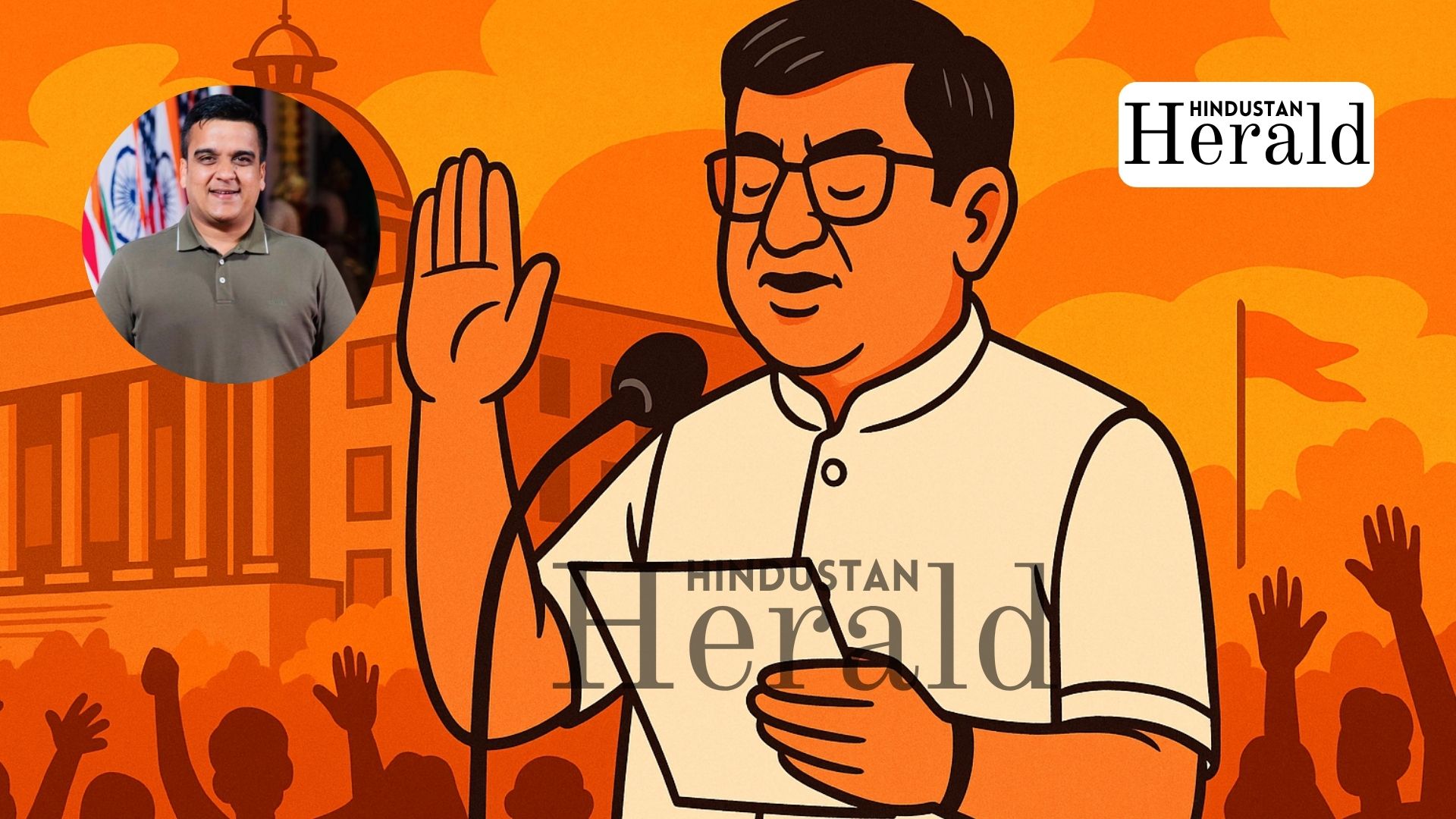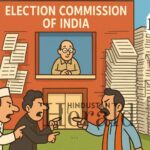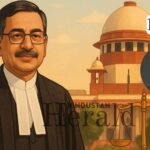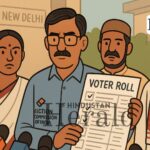Gandhinagar, October 17: The corridors of Gujarat’s Sachivalaya were unusually tense this morning. Ministers walked in without their usual aides, clutching resignation letters. By evening, a new cabinet had taken shape and at its centre stood Harsh Sanghvi, the 40-year-old BJP leader from Surat, now promoted to a full Cabinet Minister.
Sanghvi, known for his brisk walk and trademark half-sleeved kurta, smiled only briefly as he took the oath. The applause that followed wasn’t just about a portfolio; it was about what he represents a younger, louder brand of the Gujarat BJP, steeped in discipline yet restless for more power.
From Surat’s Backstreets To The State’s Inner Circle
If you talk to party workers in Surat, they’ll tell you Sanghvi’s story in anecdotes. How he once ran blood donation camps before he could legally vote. How would he sleep in the party office after organising college events? Born in 1985, educated only up to Class 8, he had none of the polish of the English-speaking political class. What he did have was persistence, the sort that keeps showing up until people take notice.
He joined the BJP Yuva Morcha as a teenager, built a network among small traders and diamond workers, and by 27, he was contesting from Majura. He won that election in 2012, when most thought he was there just to fill space on the ballot. He’s won every poll since each by a larger margin than the last.
The Minister Who Rarely Sits Still
In Gandhinagar, bureaucrats joke that if your phone rings at 11 p.m., it’s probably Harsh Sanghvi. He’s known to pop into police stations without warning and expects officers to respond with military precision. His previous responsibilities, Home, Police Housing, Disaster Management, Sports, Youth Affairs, Cultural Affairs, Prohibition, Excise, and Border Security, gave him one of the widest ministerial spans in the Patel government.
To supporters, this made him the face of a no-nonsense administration. To critics, it made him a symbol of the state’s growing intolerance of dissent. The Kheda flogging case in 2022, where Muslim men were tied and beaten in public, marked a defining moment. Sanghvi’s praise for the police that day drew outrage nationwide. Later, his offhand comment calling part of Surat “mini-Pakistan” earned condemnation from civil rights groups.
He brushed off both controversies with a shrug and a smile. “We’re doing our job,” he told reporters back then, “and people can interpret that as they wish.”
A Promotion That Says More Than It Shows
The reshuffle that brought him this promotion wasn’t just bureaucratic theatre. It was a complete teardown; every minister, except Chief Minister Bhupendra Patel, resigned to allow a clean rebuild.
According to DeshGujarat and Moneycontrol, the move was designed to project renewal ahead of the next election cycle. Among the new faces and returning loyalists, Sanghvi’s rise stood out. Political insiders read it as both reward and message stay loyal, stay visible, and the system notices.
Rumours had swirled for days that he might be named Deputy Chief Minister, a post Gujarat hasn’t had since Nitin Patel’s time. The Week and The Federal hinted it could happen. But as of Friday night, there’s still no confirmation.
That uncertainty, however, does little to blunt the symbolism. In the Gujarat BJP’s hierarchy, known for keeping power tightly contained, Sanghvi has officially entered the top rung.
The Amit Shah Shadow
It’s impossible to talk about Harsh Sanghvi without mentioning Amit Shah. The parallels are easy both started young, both worked the organisation’s roots, and both built reputations for strict administrative control. Shah’s proximity to Sanghvi has been whispered about for years.
For Sanghvi, that association is both shield and pressure. It gives him stature, but it also raises expectations. Those close to him say he often measures himself by Shah’s template efficiency first, empathy later. His speeches rarely wander into emotion; his language is of control, not comfort.
Inside The BJP’s Next Experiment
The BJP’s leadership in Gujarat knows the stakes. Bhupendra Patel offers calm continuity; Harsh Sanghvi brings speed and spectacle. Together, they represent two halves of the party’s state persona governance, and aggression.
If Sanghvi retains charge of Home or adds more weight to it, he will effectively control the state’s law-and-order machinery. That gives him immense influence over both administration and political narrative. It also means greater scrutiny. Every police action, every protest crackdown, every communal flare-up will now trace back to his office.
Still, party insiders insist he’s being groomed not just for today’s Gujarat but for tomorrow’s national stage. “He’s tireless,” said a senior BJP leader, off record. “Ambition doesn’t sleep in his case.”
The Road Ahead
Whether or not the Deputy Chief Minister tag comes through, Sanghvi’s trajectory already puts him among the BJP’s future heavyweights. His rise is part of a generational churn, one that prizes fieldwork and social media presence as much as policy depth.
But politics has a long memory. The same aggressive policing and rhetoric that fuel his popularity could, in time, test his ceiling. Gujarat voters admire strength, but they also notice excess.
For now, Sanghvi has momentum, visibility, and the party’s trust, three things that rarely align for long. His challenge will be to turn this moment into something lasting, something more than just another reshuffle headline.
Stay ahead with Hindustan Herald — bringing you trusted news, sharp analysis, and stories that matter across Politics, Business, Technology, Sports, Entertainment, Lifestyle, and more.
Connect with us on Facebook, Instagram, X (Twitter), LinkedIn, YouTube, and join our Telegram community @hindustanherald for real-time updates.
Covers Indian politics, governance, and policy developments with over a decade of experience in political reporting.






